WHAT IS THE EPOC EFFECTEPOC, or Excess Post-exercise Oxygen Consumption, is often referred to as the "afterburn effect." It describes the increased rate of oxygen intake following strenuous activity intended to erase the body's "oxygen deficit."Understanding EPOC Exercises That Maximize EPOC Key Factors
0 Comments
"The only person you are destined to become is the person you decide to be." – Ralph Waldo EmersonMaximizing Health and Vitality After As we cross the threshold of 40, our bodies undergo significant changes. Muscle mass starts to decline, metabolism slows down, and the risk of chronic diseases increases. However, this doesn’t mean that we should accept a lower quality of life as we age. Quite the contrary – it’s an opportunity to redefine our health and fitness strategies. The combination of weight resistance training and a clean, healthy diet plays a crucial role in this journey. The Power of Weight Resistance Training1.Combatting Muscle Loss: After 40, we start to lose muscle mass – a condition known as sarcopenia. Weight resistance training is the most effective way to counter this. Lifting weights helps to build and maintain muscle, ensuring that our bodies remain strong, functional, and capable of handling everyday tasks with ease. 2. Boosting Metabolism:With age, our metabolic rate decreases. Muscle tissue burns more calories than fat, even at rest. By increasing muscle mass through weight training, we can boost our metabolism, making it easier to maintain a healthy weight. 3. Strengthening Bones: Osteoporosis is a significant concern as we age, especially for women. Weight-bearing exercises strengthen bones, improving bone density and reducing the risk of fractures. 4. Improving Balance and Coordination: Regular weight training enhances balance and coordination, reducing the risk of falls, which is crucial for maintaining independence in later years. The Impact of a Clean, Healthy Diet1. Nutrient-Rich Foods for Aging Bodies: Our nutritional needs change as we age. A diet rich in fruits, vegetables, lean proteins, whole grains, and healthy fats provides essential nutrients that support cellular health, immune function, and overall vitality. 2. Managing Weight and Chronic Diseases: Eating a clean diet helps in managing weight and reduces the risk of chronic diseases such as diabetes, heart disease, and certain cancers. Processed foods and high sugar intake are linked to these health issues, so focusing on whole, unprocessed foods is key. 3. Enhanced Energy and Mental Health: A healthy diet isn’t just about physical health; it’s also about mental well-being. Foods rich in omega-3 fatty acids, antioxidants, and vitamins can enhance mood and cognitive function, keeping our minds sharp. 4. Better Digestive Health: As we age, our digestive system becomes less efficient. A diet high in fiber from fruits, vegetables, and whole grains can help maintain digestive health and prevent issues like constipation and bloating. Integrating Weight Training and Healthy Eating into Your Lifestyle1. Start Slow and Be Consistent: If you’re new to weight training, start with lighter weights and gradually increase the intensity. Consistency is more important than intensity in the beginning. 2. Seek Professional Guidance: Consider working with a fitness trainer or a nutritionist. They can help design a program that’s tailored to your specific needs and goals. 3. Make It Enjoyable: Find physical activities and healthy foods that you enjoy. This makes it easier to stick to your fitness and diet regimen. 4. Listen to Your Body: Pay attention to how your body responds to your diet and exercise routine. Adjust as needed to avoid injury and ensure optimal health. ConclusionTurning 40 isn’t a signal to slow down; it’s an invitation to take control of your health and well-being. Through weight resistance training and a clean, nutritious diet, you can maintain strength, energy, and vitality for years to come. It’s never too late to start making changes that can profoundly impact your quality of life. Embrace this journey with enthusiasm and commitment, and your future self will thank you.
Awaken Your Inner DriveWhy Motivation is Important in Your Fitness Journey Maintaining motivation is crucial when embarking on a fitness journey. It serves as the driving force that propels you forward, helping you overcome obstacles and stay focused on your goals. Without motivation, it can be easy to lose sight of why you started and give in to discouragement. The Science Behind Motivation Motivation is a complex psychological process that involves a combination of intrinsic and extrinsic factors. Intrinsic motivation comes from within and is driven by personal satisfaction and a sense of accomplishment. Extrinsic motivation, on the other hand, is derived from external rewards or recognition. Understanding the different types of motivation can help you harness their power effectively. Intrinsic motivation is the key to long-term success. When you find joy in the process of exercising and achieving fitness milestones, you're more likely to stay committed. Extrinsic motivation can provide an initial boost, but it may not be sustainable without a strong internal drive. Finding Your Why: Discovering Your Inner Drive to stay motivated on your fitness journey, it's essential to uncover your "why". What is the underlying reason behind your desire to improve your fitness? This could be anything from wanting to feel confident in your own skin to improving your overall health and well-being. Take some time to reflect on your personal motivations. Write them down and revisit them whenever you feel your motivation waning. By connecting with your inner drive, you can tap into a powerful source of inspiration that will keep you going even when faced with challenges. Setting Realistic Goals for Your Fitness JourneySetting realistic goals is vital for maintaining motivation. Be specific about what you want to achieve and set measurable targets. For example, instead of saying "I want to get fit," set a goal like "I want to be able to run a 5K in under 25 minutes within six months." Break down your goals into smaller milestones. This will give you a sense of accomplishment as you reach each one, fueling your motivation to keep going. Remember to celebrate your achievements along the way, no matter how small they may seem. Creating a Motivational EnvironmentYour environment plays a significant role in your motivation levels. Organize your workout space to make it inviting and clutter-free. Surround yourself with items that inspire you, such as motivational posters or pictures of athletes you admire. Additionally, establish a routine that supports your fitness goals. Plan your workouts in advance and stick to a consistent schedule. By making exercise a non-negotiable part of your day, you'll be less likely to skip it due to lack of motivation. Surrounding Yourself with Positive Influences. The people you surround yourself with can greatly impact your motivation. Seek out like-minded individuals who share your fitness goals. Join a fitness group or find a workout buddy who can provide support and encouragement along the way. Social media can also be a valuable tool for finding inspiration. Follow fitness influencers or join online communities dedicated to health and fitness. Surrounding yourself with positive influences will help keep you motivated and accountable. Using Gym Quotes and Fitness Quotes for MotivationGym quotes and fitness quotes can be powerful motivators. They serve as reminders of the strength and determination needed to succeed on your fitness journey. Find quotes that resonate with you and write them down or create visual reminders to keep you motivated. Place these quotes where you'll see them regularly, such as on your bathroom mirror or as your phone's wallpaper. Whenever you feel your motivation wavering, read these quotes to reignite your inner drive. Overcoming Common Obstacles and Staying MotivatedObstacles are a natural part of any fitness journey. Identify the common obstacles that may arise, such as lack of time, fatigue, or self-doubt. Once you're aware of these potential roadblocks, you can develop strategies to overcome them. For example, if time is an issue, prioritize your workouts by scheduling them into your day. If you're feeling fatigued, consider adjusting your workout intensity or trying a different form of exercise. When self-doubt creeps in, remind yourself of your past achievements and the progress you've made. Tips for Staying Motivated in the Long TermMaintaining long-term motivation requires ongoing effort. Here are some tips to help you stay motivated on your fitness journey: 1. Track your progress: Keep a record of your workouts, measurements, and achievements. Seeing how far you've come can reignite your motivation. 2. Reward yourself: Treat yourself to non-food rewards when you reach significant milestones. This will give you something to look forward to and reinforce your hard work. 3. Try new things: Variety is key to staying motivated. Explore different workout styles, classes, or sports to keep your routine fresh and exciting. 4. Find a balance: Don't be too hard on yourself. Allow for rest days and indulge in occasional treats. Remember that fitness is a lifelong journey, and it's essential to find a sustainable balance.
Staying motivated on your fitness journey is a continuous process that requires self-reflection, goal setting, and the creation of a supportive environment. By understanding the science behind motivation, discovering your inner drive, and implementing strategies to overcome obstacles, you can stay motivated in the long term. Remember, motivation is not always constant. There will be days when it's challenging to find the drive to exercise or stick to your nutrition plan. During these times, be tough and rely on the strategies outlined in this guide to reignite your motivation. Embrace the journey, celebrate your achievements, and let your inner drive propel you toward success. DEFINITION OF RECOVERY & FITNESSWhen it comes to fitness we need to understand the meaning of both and how important they are to each other.You cant excel in one without properly doing the other. 5 BEST SUPPLEMENTS FOR RECOVERY 1.CREATINE
3Creatine is a popular dietary supplement that has several potential benefits, including: 2.BCAAs
BCAAs (Branched-Chain Amino Acids) offer several potential benefits, particularly for athletes, fitness enthusiasts, and those engaged in regular physical activity. These benefits include: 3.ELECTROLYTES
Here are some common electrolytes for recovery: FOLLOW US FOR MORE INFO OR SUBSCRIBE TO OUR DAILY EMAILS 2023....TIME TO LEVEL UP What makes this year so special. Well, in my eyes, the last few years have been so fucked up, with no one knowing whether they are coming or going. No one really let go and comitted to something. So many people fearing the Unknown. Well guess what? Fuck the unknown and make or create your own path. Be your own MAN or WOMAN. Real MAN or WOMAN (M/W) dont ask for permission, they dont beg and they dont sit and wait. We CREATE, We DO and We LEAD. So LEVELING UP is exactly that. Taking yourself from version 1.0 to version 2.0 Owning your mistakes. Owning your decisions and becoming the real YOU. I read something from one of my favourite authors today. BEDROS KEUILIAN If you want to feel depressed and anxious, follow this roadmap: - Don't exercise. - Drink booze to escape your problems. - Eat high sugar, high-fat foods that are void of nutrients. - Stay isolated. - Ignore and avoid people who want to help you. - Avoid the outdoors and sunlight - Spend money on things you don't need and can't afford. - Don't explore your calling or purpose. - Screen sucking on social media all day. If you follow this roadmap to the "T" I guarantee you'll be depressed and anxious. WHY DID THIS RESONATE SO MUCH. Because I used to follow this roadmap, and did I feel good about myself, FUCK NO. So what he is trying to say, if you do the opposite, most of your anxir\ety and depression goes away. You become confident. You stop blaming the world. You take ownership for the decisions you make and the mistakes you make. And ideally you find a purpose. I can speak from a mans point of view. We need purpose and we need to feel like we are important and needed by our loved ones and friends. And you cant be those things with your head up your ass and not being the man or woman that you are destined TO BE and WANT to become Becoming that 2.0 version takes effort, dedication and purpose. You need to start making those small changes, changes that you thought are not important, well guess what, they fucking are. "V"s & "L"s Small changes lead to small victories. Your life and day should be about collecting those small victories. Little "V"s I like to call them. Because thats how you set up a winners mentality and start getting your days right, then your weeks and so on. So its about collecting "V"s and not "L"s (losses). And its easy to start collecting these Vs and building them up throughout the day. Its about keeping those little promises you make to your self and sticking to them. Its like me saying to myself the night before I go to bed, I am getting up at 4.30am to be at Gym by 5.30am. I am going to drink 2 glasses of water in the morning as i get up and have a banana and shower before I get there. That should be a PROMISE that you make to yourself So the morning comes and the alarm rings at 4.30am, YOU now have 2 options, OPTION 1 get straight up and collect that V, or hit snooze and collect your first L for the day. I might not mean much at the time, but subcontiously your mind and body are either collecting victories or losses, and its sets up your day. So you get staright up, drink those 2 glasses of water, smash down a banana and have a shower and be at the gym by 5.30. 5 "V"s collected before 5.30am. What a START Now if you went the opposite way and hit snooze, woke up 15 minutes later, only had time for a quick glass of water, didnt have that banana and skipped that shower and made it to the gym rushing and at 5.35am. How many "V"s did you collect. I would say ZERO, but you already collected 5 "L"s and that could not be the best start to the day. And believe me, the mind is such a powerful thing. It plays games with you, if you feed it "L"s it will get used to taking them in. Be a "V" person. Start amking yourself promises and collecting those victories and then start seeing how your life changes around and what discipline can do DISCIPLINE is the key to all success. Without DISCIPLINE, you will not put in the HARD WORK, and without HARD WORD there is no REWARD This is just the start of how we will start LEVELING UP as a KDP Team The breath is the foundation of Life!
So many of us breath in all different patterns that may be detrimental to our health. When we don’t have correct breathing patterns it can lead to an increase in core pressure. Changing or understanding the correct method of breathing and engage the core properly has an immense positive to core control, hence decreasing many nasty side effects. HOW TO WE KNOW WE ARE BREATHING CORRECTLY? Have a look at yourself in the mirror and take a deep breath in, check out what is happening. You should be full body breathing, breathing down into the diaphragm, belly, sides and back. Many use their shoulders to elevate their lungs, suck their diaphragm up, some lifting one shoulder up and push the other down. Signs you could be breathing incorrectly are
By retraining our breathing pattern (this can take A LOT of practice) it can help improve ones core pressure when exercising, lifting and doing normal day to day life. SO WHAT DOES CORRECT BREATHING LOOK LIKE! Breathing In (INSPIRATION)
Breathing Out (EXPIRATION)
So if we have a look at core pressure and breathing you can see if your breathing pattern is always at the top half of your body, pressure is always constantly down. This creates constant unwanted pressure in your abdomen, leading to more pressure when you actively lift, do an ab crunch, pick your kids or washing basket esp. Some signs that you have poor core control are
I always get my patients to focus on correct breathing technique for a few days and then incorporate correct bracing. Correct bracing is important to stabilise the pelvis and core and maintain heathy pressure while exercising or doing strenuous work. What does it look like! Bracing starts from the exhale. While exhaling activate your core muscles (transverse abdominis) initially and from the pubic bone tighten your abs slowly up towards the bottom of your rib cage. The action is like zipping up the abs, not sucking your belly in. Give this a go and see if you feel a difference. Caroline Springs Osteopathy Dr Daniella Zampierollo Osteopath (2722076B) WHERES YOUR STRENGTH??
Strength can be a number of things, Inner Strength, Mental Strength, Muscle Strength. They are all types of Strength. How many of you can say that you have all three. How many can sit there and look at themselves and say that they will sacrifice everything to get what they want, or get to a goal they have set, or to make the right choices all the time. That’s the difference of giving everything to something, to devote and put 100% in, doesn’t matter how long it takes. To do the same thing day in and day out and not to waiver one little bit. Well they are the things that define us and allow us to get to that goal. Not giving up and not giving in. Even when those voices become louder and louder. If you can say that you are and can and will. Then and only then, can you say “I have given it everything I have.” Let’s go Back to late 2009. Kelly was doing her best to stay on top of things. She had a few BodyPump classes at Re-Creation, the vibe and atmosphere were phenomenal there. She loved it there and everybody was so connected and such a great team. Her Training was amping up and she was looking fantastic. Yes!! Looking fantastic. Feeling Fantastic. Still a No. But it wasn’t stopping her. She knew her routine back then and it really hasn’t changed much. Fuel the body with the right nutrition. Nothing bad was going in. And she needed to Rest as much as possible. There had been stints in the past few months where she would need to miss a number of weeks of teaching and working and just stay home and rest. Her immune system has always been weak since the inception of her disease. So any little flu that others would shake off, she felt the full brunt of it. Bed Ridden and sick for days and then a slow recovery to get back to “Her Normal” and then Repeat. That’s how it has always been for her. Down and slightly Up and then Down again. But the main thing keeping her body strong and her mind strong was BODYPUMP. She loved teaching it and she was great at teaching it. Within a few month of teaching she started having a large following and people were starting to realise, that if you did Kelly’s class, you know you got a workout and were kept accountable all the way. And she made sure that she did everything at a higher level then anybody else, to not only push them but to push herself to new levels. It really made her who she is today. Strong inside and Out. Bodypump saved her Life and gave her new Life. Something to strive for and something to keep the mind from thinking about the bad things. Leaving 2009 and entering 2010, something happened. Something that really moulded her and let her become free again. She was starting to meet a lot of different individuals in the Fitness World. And at that time, at Re-Creation there were some extraordinary trainers and fitness brains. She was picking them all and working with them. Two particular people spring to mind. Kelly really looked up to Warren Clampit, he was the reigning MR Olympia Natural Bodybuilder and he was regularly coming into Re-Creation. And the other was Dave Caruana. A PT who had more knowledge about Bodybuilding and training, then anybody we had met in the past. Between the 2 of them and myself, we convinced Kelly to do a bodybuilding comp. All Natural, and just take a chance at something. With a little tweaking and training she could get ready. The Miss Melbourne Titles were around 3 months away. And once Kelly gets something planted in her head, that is it. Full effort. Full devotion. And Nothing can Stop her mentality. So for the next week weeks she would train, eat and sleep like a bodybuilder. Her biggest idol in her life had always been Arnold Schwarzenegger. So she bought his encyclopedia. Read it back to front and became a total MACHINE. The training was the enjoyable part. She still kept up her BodyPump classes. But added hours of strenuous training sessions with myself and Dave. Working out with a new goal and obsession, made her forget to an extent how bad her illness is. Even though she woke up with it daily, she learned to push it aside and focus and work. Saying that training was enjoyable, is one thing, the meal prep and diet were another thing, Times were much simpler back then. The goal was and is still the same. Strip Body Fat and Keep or Retain on to as much muscle as possible. But Today's guys have so much more information and nutritional help. Back then it was pretty much boiled Chicken. Ice Berg Lettuce Leafs and maybe a little broccoli and brown rice. Breakfast Lunch and Dinner. And a few protein shakes. Kelly was killing it. And with around a month to go was close to being ready for stage. So the it was work harder and eat less the closer to the show. Kelly has always said it was the hardest thing that she had ever done. The last 2 weeks her carbs were pretty much cut down to zero. I could see her turn into a zombie. The brain needs carbs for fuel, and once you deprive it over an extended amount of time, you just cant think, you cant talk and you pushing on reserves the body doesn’t have. And saying all that. She is always minutes away from getting sick. And that’s what happened. With under 2 weeks she got extremely sick. A cold or Flu that really sat her down. One, Two days and then three and Four. Still not getting better. She still kept training as much as she could. Once you get close to comp time, it becomes all about getting that cardio in and leaning up as much as possible. We had to take her Local GP. A GP she knew very well. And she knew that when Kelly got like this she needed Penicillin Shots. Everyday for the next 10 days I took her in to get that SHOT. That’s how sick she was. She would go in there all rugged up, so her GP didn’t know that she was competing. Not for the reason it was doing her any harm, but because people don’t understand what it meant to her, to achieve this and get on that stage. And not to quit. Her illness had taken so much away from her and it was trying to take this away as well. And she was determined to not let the illness win. She needed this win. There have been times over the last 15 years that she has been really, really sick. And this was one of her worst. And by the time it she received her last Shot, it was only 4 days from comp. It was like get there or die. That’s how much it took for her to get on that stage. The whole time all she did was keep eating like she needed to, and train at home. She didn’t work for those last 2 weeks. By the time the event came. Kelly was ready. She was so deprived, but she looked amazing. She entered the Figure Competition for Novice competitors. Most girls who enter a comp usually start with Bikini and slowly build there way to Figure. But not Kell. She goes straight for the top. The amazing thing was that over the time of her preparation, the vibe around Re-Creation was building. There really hadn’t been anybody that had competed from that club before. There were a few main gyms were all the competitors came from. The main one was Doherty’s Gym. They had a few gyms and there own Tony, pretty much started bodybuilding in this state. 90% of the competitors trained there, the judges all trained there and everybody knew everybody. No one from a small gym or an outside gym ever won a competition. But this made it even easier. Less pressure. However saying that.A little gym from Caroline Springs bought over 50+ tickets all to go and see Kelly compete. The owners, Darren and Rob were proud as. We had hooked up the a Fitness guru from the other side of town, Tony Haranas. He was in his 50's and absolute machine. Still competing and winning comps. He controlled what Kelly ate and when leading into the comp. And he knew he had something special. She is and was at that time an absolute animal and machine. When it came for comp time and prep, she was in the back with Tony. These comps always run late. He started warming her up. And by this time she wasn’t allowed any water, 1 cup in the last 24 hours. He warmed her up with bands and dumbbells for over 2 hours in the back. She was almost dead. But her veins had popped and she was dry. Exactly what was needed. She jumped on that stage, not knowing how to correctly pose, and competing against girls who had done this times and times before. It was a Novice field she entered. But there were so many categories that night. Kell blew them apart. She stood on there looking like a carved goddess statue. Absolutely perfect. Even if the judges, knew or had their own competitors, they had no choice. She received the nod and won her first title. Ms Melbourne Novice. It was amazing and so many experienced it in the crowd, and we all felt a part of it. It was special. But it wasn’t over. Now that she won that, she was entered into the main draw with all the other female winners. Winners that were pro’s. Doing this forever. So she went back stage. Another hour had passed. Working out the whole time. By the end all she could do was cry and still kept on lifting. Still only small sips of water. It was the most painful thing she had ever done. But the time came and she jumped on stage with all the other competitors. All experienced girls. All with unbelievable physiques. But seeing her on that stage was like looking up their yesterday. She blew them away. Nobody stood a chance. She became MS MELBOURNE CHAMPION in her first comp and the place went wild, there were over a thousand people in that venue that night, and everybody knew Kelly was the best. It was an unbelievable part in her journey and has forged who she is and who we are today. We only shared our illness journey late last year with everybody. Nobody back then, besides close friends knew what she was up against and what it took to win. It took absolutely everything to win that day. Her Inner strength kept her pushing forward. Her Mental Strength kept her focused and didn’t allow her to quit. Everyday she wanted to quit. But she never quit. That is what it takes. You have to be prepared to die for something you believe in. And she could have easily died. But she finished her dream. Gave it everything. Even if she didn’t win. Just getting on that stage was the biggest win of her life. The lesson that she learned from that time of her life was, no matter what life throws at you, you have two options. Let, QUITTING define you. Or Let, Being an Absolute Machine Define you. We all know what defines Kelly… Why is Kelly a Vegan and how did we get here?? There are a lot of reasons to go Vegan, for Health, To decrease pain in the Body, to save the Planet. Individually these all are great reasons, but collectively they are a strong argument. But I want to share you the reason Kelly has been vegan for over a Year now and before that a Vegetarian for almost 10 years. What is the difference between Vegan and Vegetarian you may ask? They are similar, but Vegans really take it to the next level. Vegetarians don’t eat Meat or Meat products while vegans don’t eat any source of animal protein what so ever. So Diary is out, eggs are out, meat is out, anything that comes from an animal is out. So knowing that now, I want to explain the reason why Kelly is doing the Vegan option. She is doing it for her health, and primarily to try and improve her health. Almost everybody in this world has an option and if they choose to consume animal proteins, majority of the time, their body doesn’t react have any adverse side effects. The human body is an amazing thing and it will change and adapt to almost anything. That’s if you are healthy. And being healthy varies from person to person. How many of you know somebody that has abused their body for decades, alcohol, processed foods, cigarettes (Just to name a few) they are doing OK until they hit middle age and then one thing after another starts to slowly show signs that the body is weakening and cant cope anymore. And then it becomes to late. But all these people had a choice. But going back to Kelly, she has no choice. Imagine if you had no choice. Would you do whatever it takes. Would you do everything in your power to try and get better and try to improve your day to day living. Well that’s what she has to do Over 15 years ago, Kelly initially got sick. She copped a flu like symptoms in 2005. But unlike anything that she had experienced before. Normally, she would just shake it off and go to work and push through it. But this was different. Initially she was bed ridden for a few days, we went and seen a doctor and got prescribed antibiotics. Simple you would think. Well it wasn’t. 3 weeks she carried that Flu like Illness and eventually got a little better. But since that day has never shrugged. For weeks after that she felt tired, a fatigue that was debilitating. She lost her old self. Her OLD self. She was the life of any party, her old self that would wake up at 4am, go to work at The Age Print Centre and run the show there, she was a hard worker and out did all the guys there. Carrying, lifting, driving forklifts, being a machine. She would come home, go to the gym, cook me dinner, clean the house, do everything normal people do, but with a smile, loved every minute of being busy, loved life, loved people. She was Kelly. Nobody knew anybody like her before, she had time for everyone and we were just 6 months from getting married. The best time of our lives and on top of that we had just moved in with each other. That was before that nightmare day when she woke with that illness, that disease that changed her. From that day on, 15 years ago, ours lives changed. Kelly was sick. And even when her symptoms subsided a little, she was still sick. She could hardly bring one foot in front of other and felt ill. We started looking more deeply, seeing other GPs, getting blood tests and nothing, they couldn’t find anything. So after a few months and just before we were to be married in December 2005, she was diagnosed with Chronic Fatigue Syndrome. At the time it was great to have a “LABEL” and think that we had an answer and could get a result from it. That never happened, years of seeing Specialist, Experts in Chronic Fatigue, Natural healers, Alternative Medicines. You name, we tried it. And she still kept on fighting, We learned how to make her feel a little better, some days were better then others, some days were absolute shit. Even though she was probably living at under 50% capacity, she still went to work, she had to reduce her hours, but gym was gone, training was gone. All the things she loved were taken away from her. She could just get through a day. One day at a time. Then in 2007 she hit a bad wall, she had to quit work and was pretty much bed ridden for 12 months. She was at her worst and wanted to end the pain, misery and depression. Everyday when I was coming home from work, I feared the worst. But I kept her chin up and we kept pushing forward. Those days were the hardest that anybody could go through, but it has taken us where we are today. A strong bond, a strong belief, a strong passion and a strong love. We are One. And because we have been through the hard times together we also experienced some unbelievable things along the way as well. All the hard times that we endured, forged what we have today, forged what we believe in. If you want an encyclopedia on the human body and how it works, ask Kelly. There is nothing that she hasn’t firstly tried or researched about. And it is only in the last few years that she has been able to do the normal things a little more frequently, and that is no thanks to medicine or specialist, it is to our devotion and dedication of trying everything. The good thing to come out of her bad time in 2007, was that she did her schooling slowly in CERT 3&4 in Fitness and at least had some qualifications behind her. But believe me she still wasn’t training and her body and mind were still broken. It was to the end of that year, that she started feeling a little better and made a choice to return back to work at her job at the AGE. And you guys know Kelly, you give her a little sniff and she takes off running. She was feeling a little better, still at about 50%, but she took it as a new lease on life. She wanted to repay the management at her Job at the AGE, they kept her on and kept paying her weekly even though she wasn’t working, because they knew what she meant to them, they loved her there, as everybody does when they get to know her. So she went back, they helped her and she started to regain a little self belief and felt human again. But even during this time, she was still trying. In that period she had her tonsils removed, maybe thinking they played a part, in her ears they put gromets, because her head was always feeling full and she never lost those flu-like symptoms. Her thyroid was abnormal, so they put her on medication. Then we realised that from all the anti-biotics that she had previously been taken that she developed a yeast overgrowth, Candida, so we had to start dealing with that. Kelly always ate very well, but with Candida, it loves sugar, and that was the first time she really had to go hard with a diet. She removed all sugar, processed, fructose, glucose anything. And that was for over 1 year. One year straight she didn’t have a drop. No yeast either. So staying away from all processed food in that time. She was still eating meat, but sparingly. So her candida was that bad, that it took over a year to some what recover. But those early years was all about learning as we came across things. Kelly always felt blocked and deaf, she always said I wish something or someone could just suck everything out of my head. Then by luck, or by Gods will, one morning she woke up and her pillowcase was full of green and smelling liquid. She panicked and went and seen her GP immediately and took the sample. The results came back and it was Aspergillus, a fungus and it was growing inside her head. They said that if it had not come out and shown itself and we never treated it, that it would have entered her brain and killed her. Thank God it seeped out. So they treated that, got rid of that, she did feel a little better, and we honestly thought, “YES” this is it, but with Kelly, there is no luck and her symptoms still stayed. She remained the same. Functional, but just living, not enjoying the moment. 2008 was a year that Kelly started her fitness career. Her dream job, she was still at the AGE, but started part time at FERNWOOD Cairnlea. A great place to start and build her confidence. Working the floor, helping people and doing PTs. Quickly, she realised she had something special to offer people. So she started devoting more and more time to fitness. Then one day she walked upstairs to Re-Creation Caroline Springs and that changed everything. As soon as the owners Rob and Darren seen her, they knew. Even though when she walkied in, wearing her AGE uniform and holding shopping bags, they knew. She started that night. They asked her to freestyle a class, she had never done that before. But bang, smashed it. And that’s where it started. She went and registered for BodyPump, a week or so later and went to the initial training day, never before having participated in a BodyPump class. She just went and done it. So everybody in that initial training were participants or had taken part for many years, before they took that next step and became an instructor. Not Kell. Straight in and killed it. And just like that started teaching bodypump at Re-Creation. She took what she could get and wasn’t going to let her illness slow her down. We were GOING win. But it was taking a toll. She was still feeling sick and fatigued constantly, still working at The Age, still at Fernwood and Now at Re-Creation, Rob and Darren could see she wasn’t right and offered her a full time position and all the support we needed, they helped us more then they know. She quit the age and Fernwood and now was solely at Re-Creation. Within a few months, Kell was taking more classes and became very close with the owners and Re-Creation. They were and still are very good friends of ours. Everything she did was for that place. And we loved it there. That was 2008, and that was only 3 years after she first initially became sick. Yes she was eating very clean by this time, all processed food were out, all sugars were out. She had no choice. She couldn’t even risk being bad for one day. Because everyday was a blessing now. Everyday was different from the next and we never knew how bad she could be the next day. So nutrition had to stay on point. Everything was on point, She hadn’t really had a drink of alcohol in those 3 years and when she did she knew she was going to pay. So everything had to be done religiously day in and day out. No room for error. She was still eating meat and not yet a vegetarian. But like I said at the start, there is a reason for her needing to do what she does now. And that story is for another day. This is a little insight to where it all initially started and how we got to where we are today. God Bless |
AuthorKDP Fitness Archives
January 2024
Categories |
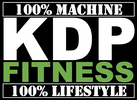



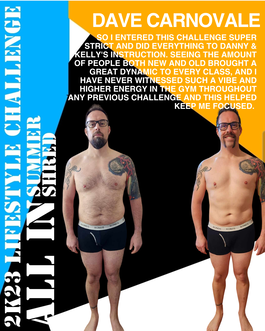



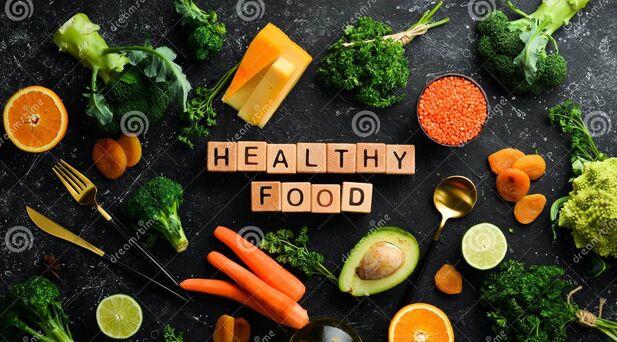







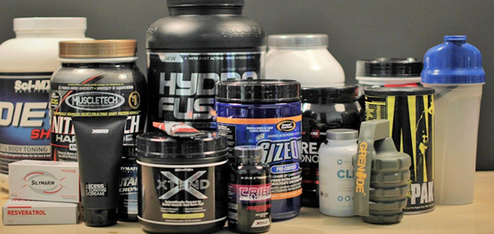
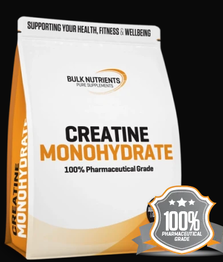
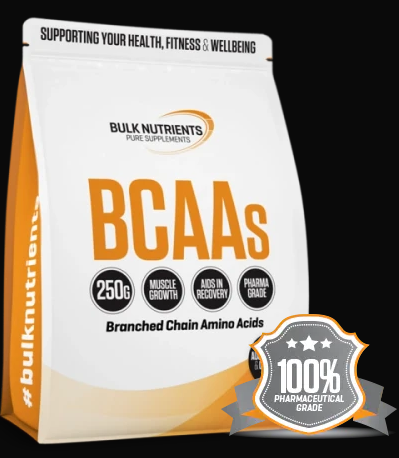
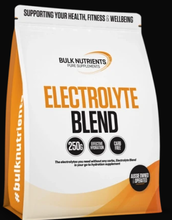

 RSS Feed
RSS Feed
